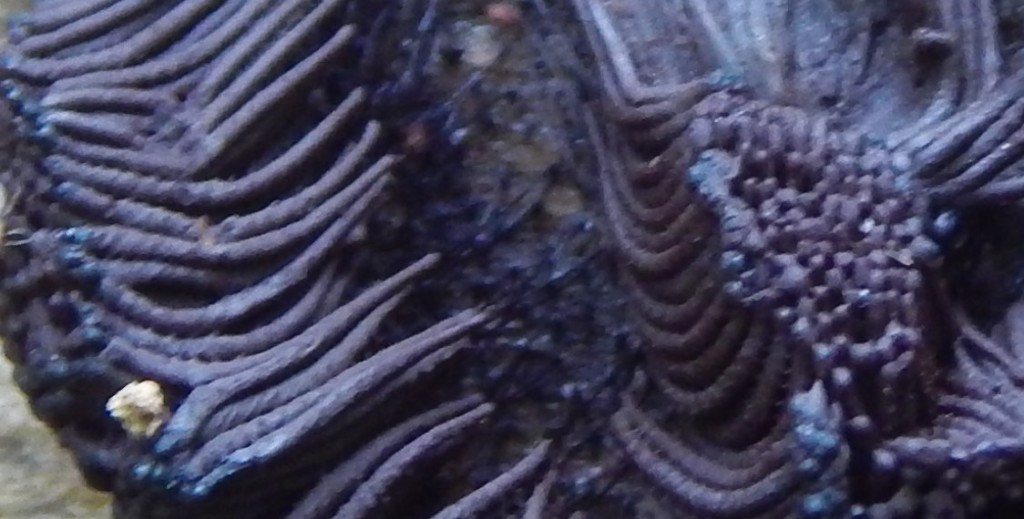
[324] Stemonotis splendens, Chocolate Tube Slime
Introduction
Stemonotis splendens, Chocolate Tube Slime, is a type of slime mould that looks like thin tubes of chocolate.
(US English adopts the spelling mold for mould.)
Taxonomy
Domain – Eukaryotes (Contains Animals, Fungi, Plants and others)
Kingdom – Protista (Eukaryotes except Animals, Fungi and Plants)
Phylum – Amoebozoa (Single-celled organisms and slime moulds)
Subphylum – Conosa
Infraphylum – Mycetozoa (Slime Moulds, Polyphyletic)
Class – Myxogastria (One of three groups of Slime Moulds)
Order – Stemonotidales
Family – Stemonitidaceae
Genus – Stemonotis
Scientific Name – Stemonotis splendens
See text below.
Name
Stemonitis comes from the Greek stemon, thread, from the shape.
Slime Moulds
We have to go a long way up the taxonomic tree of life to find this species. It’s not a Plant, not even in the widest sense (Archaeplastid) that includes [079] Red Algae. It’s not included in Heterokonts that include [151] Brown Algae. It’s not in the Opisthokont group that includes all Animals and Fungi. But it is a Eukaryote, and that just means that it’s slightly more sophisticated than Bacteria and Archaea, both of which are single celled organisms without a nucleus.
When we get to that area of taxonomy, the idea of a Kingdom is not so useful. One system divides Bacteria into nine kingdoms, Archaea into seven kingdoms, and the Eukaryotes into ten kingdoms (including the three well-known ones – Animals, Plants and Fungi.) In this system Slime Moulds are one of the kingdoms within Eukaryotes.
There are several other systems but it is sometimes convenient to simplify things. So, we can divide all organisms into Eukaryotes, Bacteria and Archaea. Then we divide Eukaryotes into Animals, Fungi, Plants and Protists – this makes Protists a paraphyletic Kingdom.
(There is a lot of Taxonomy here and more than the usual amounts of Anglicization. I haven’t used the Latin forms Eukatyota, Protista etc.)
The Phylum Amoebozoa contains about 2 500 species, including some (but not all) single-celled species and Slime Moulds. There are about a thousand species of slime mould. They are species that sometimes live as single-celled organisms and sometimes congregate and move as a single organism. They feed on microorganisms found in dead plant material and so can be found in soils and on dying deciduous trees. Slime moulds are a polyphyletic group that includes Myxogastria, the only macroscopic slime moulds, sometimes visible without a microscope.
They go through stages of being single-celled and sometimes aggregate to visible size.
Description
The genus Stemonitis has about twenty species that need microscopic examination to identify precisely.
Its macroscopic form consists of long, thing, dark purplish brown tubes.



Cameras do things with balancing white levels and these pictures may look more purple. I saw this as chocolate brown.
Habitat and use
Stemonitis is almost worldwide, generally found on decayed wood. The tree on which I found it had been dead for some years.
Other Notes
You may never come across a slime mould. I have vague memories of seeing them once or twice in my life, appearing overnight and disappearing when touched.
I photographed this when I saw it because I did not expect it to last long. It was gone the next day and I haven’t seen it since.
See also
As you can guess from the text, there is nothing vaguely like a slime mould that you are likely to meet.
